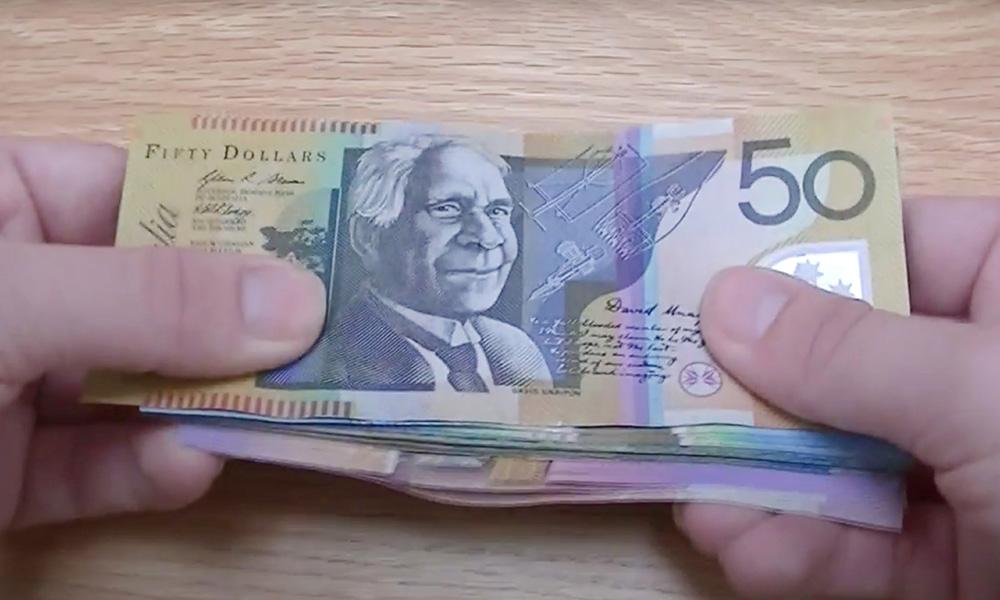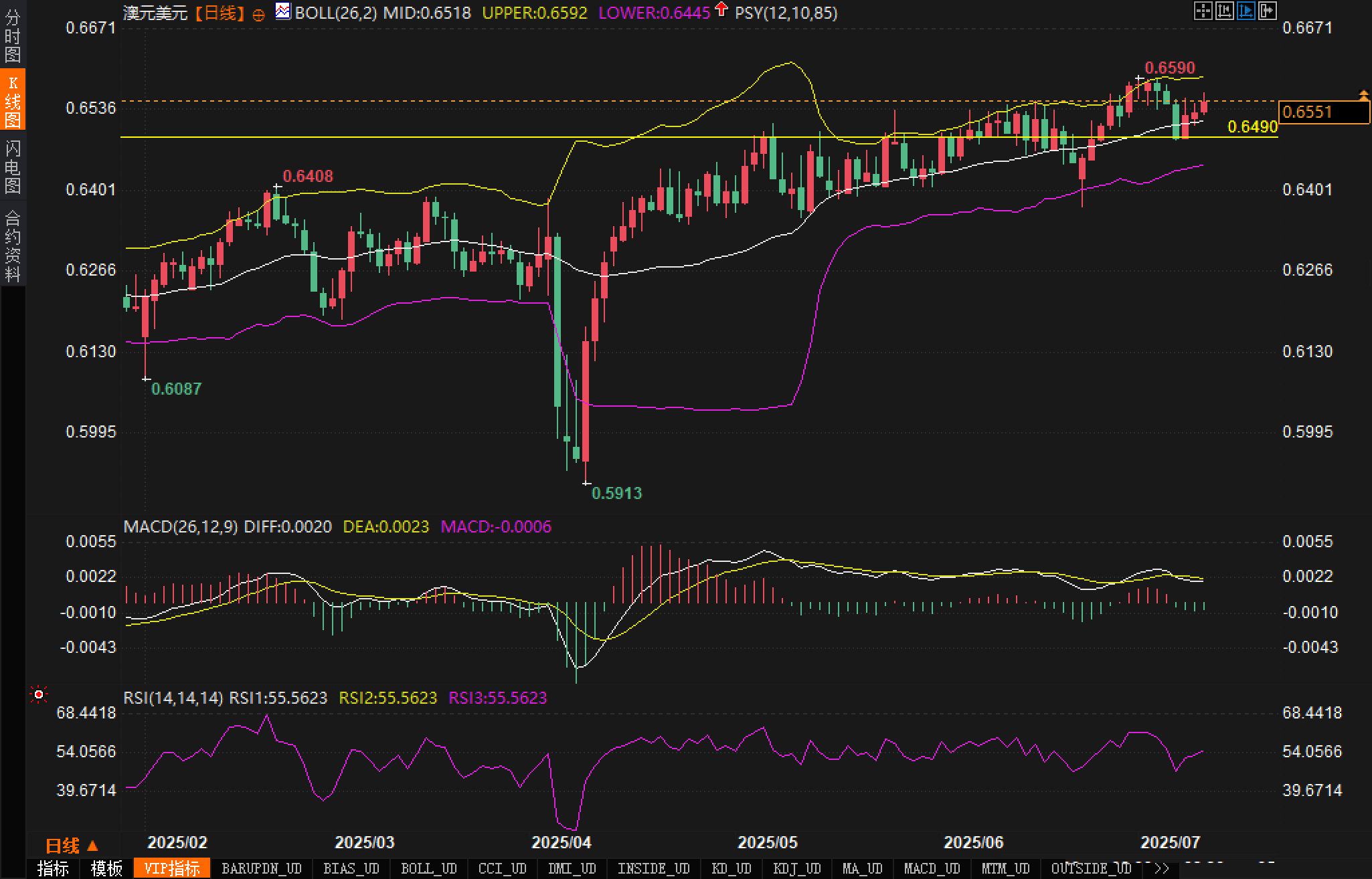AUD/USD hovers in an upward range, waiting for Australian inflation data to guide the way
2025-07-10 21:40:48

Fundamentals
This week's RBA interest rate decision was significantly beyond market expectations. Although inflation is slowly falling, the market had expected a 25 basis point rate cut, but the RBA chose to keep its policy unchanged, maintaining the benchmark interest rate at 3.85%. Chairman Michele Bullock said that there is ample policy space at present, and it is necessary to wait for the upcoming quarterly inflation data to further confirm whether the inflation path is moving towards the 2.5% target.
At the same time, the minutes of the meeting released by the Federal Reserve showed that although the pressure for policy adjustment in the early stage was increasing, most officials believed that it was necessary to observe the potential price impact under Trump's policy and there was no need to adjust interest rates in a hurry. According to the CME FedWatch tool, the market generally expects September to be the node for the Federal Reserve to start the interest rate cut cycle.
The price reaction was neutral and the Australian dollar did not fluctuate significantly due to the policy gap, indicating that market sentiment is more constrained by expectations of future data and policy paths rather than current decision-making results.
Technical aspects:
The daily chart shows that the AUD/USD exchange rate is still running above the middle track of the Bollinger Band, maintaining a narrow upward range between 0.6490 and 0.6590. The current price is close to the upper track of the Bollinger Band at 0.6592, but has not formed an effective breakthrough, reflecting that the upper resistance is relatively tenacious. The lower support level can be seen at 0.6490, which is also the confirmed area of multiple retracements in the previous period.

In terms of MACD indicator, the DIFF line and the DEA line are running in an integrated manner, and the MACD histogram is continuously shortening, indicating insufficient momentum and a lack of obvious trend guidance in the market.
The relative strength index (RSI) hovers around 55, which is in the neutral to strong area, indicating that the current buying has a slight upper hand but has not yet formed a breakthrough consensus. Analysts believe that if it breaks through 0.6590, it will open up the upward space to the 0.6670 area; on the contrary, if it falls below 0.6490, it may trigger an acceleration of the downward trend and test 0.6445 or even 0.6400.
Market sentiment observation
Market sentiment showed a typical state of long and short divergence. On the one hand, the Reserve Bank of Australia's policy was unexpectedly stable, providing some support for the Australian dollar; on the other hand, the Federal Reserve has not yet released a clear turning signal, so the US dollar still maintains a strong tone, suppressing the upside of the Australian dollar.
Overall, the market is currently in a waiting mode, tending to be data-driven rather than policy-driven. Traders are more concerned about the Australian CPI data to be released this month, hoping to use fundamental information to push the exchange rate out of the current consolidation range.
Outlook
Short-term outlook:
In the short term, the AUD/USD exchange rate is technically close to the direction selection node. Analysts believe that if the exchange rate can break through 0.6590 and stand above the upper track of the Bollinger Band, it will be expected to re-stimulate bullish momentum and challenge the 0.6670 area; on the contrary, if it falls back below 0.6490, it will form a short-term top structure, and the bears may dominate the market and launch an attack in the direction of the lower Bollinger Band 0.6445.
Mid- to long-term outlook:
In the medium term, the exchange rate trend is still subject to the relative differences between the monetary policies of Australia and the United States. Analysts believe that if the Australian CPI data continues to fall, supporting the clear path of the RBA rate cut, the Australian dollar may be under pressure; but if the Fed starts a rate cut cycle, the US dollar may fall back more, which will support the Australian dollar. The final trend will depend on who releases a clearer policy signal first.
- Risk Warning and Disclaimer
- The market involves risk, and trading may not be suitable for all investors. This article is for reference only and does not constitute personal investment advice, nor does it take into account certain users’ specific investment objectives, financial situation, or other needs. Any investment decisions made based on this information are at your own risk.










